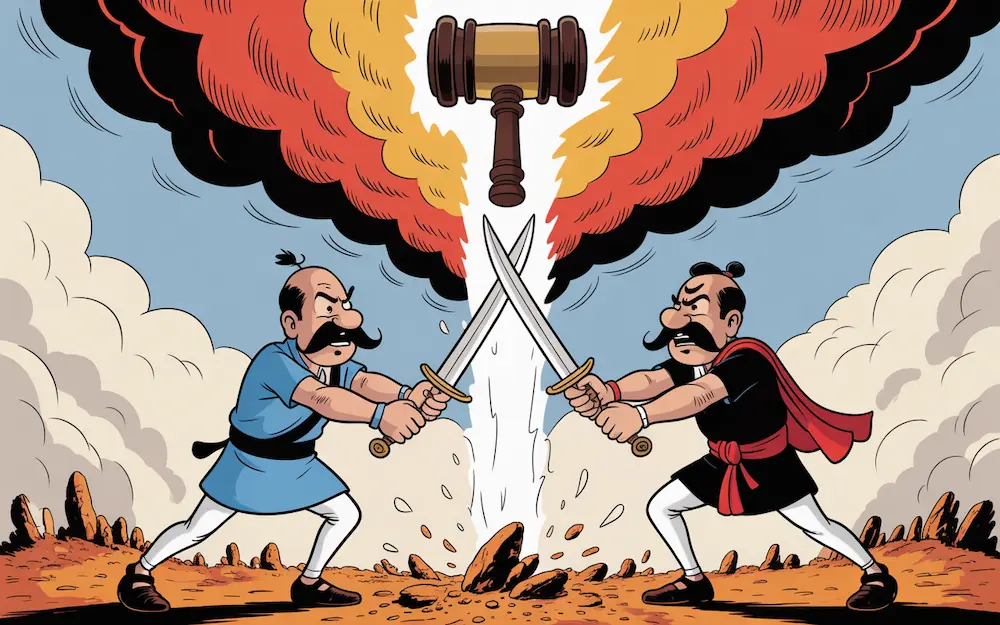
Introduction: The Conflict Between Tax Notices and IBC Resolution Plans
When a company undergoes insolvency under the Insolvency and Bankruptcy Code, 2016 (“IBC”), all dues and claims, including those from statutory authorities like GST departments, must be dealt with through the Corporate Insolvency Resolution Process (CIRP). However, despite clear judicial pronouncements, many businesses are still receiving post-resolution GST demands and notices for periods covered under the CIRP or prior to it. This raises serious questions of jurisdiction, enforceability, and legal consistency.
This article explores the legal framework and settled law surrounding GST demands during CIRP and after the approval of a resolution plan, highlighting key judgments and regulatory guidelines.
Section 31 IBC: Binding Nature of a Resolution Plan
Section 31(1) of the IBC makes it clear that an approved resolution plan is binding on all stakeholders, including Central and State Governments and statutory authorities.
“31. (1) If the Adjudicating Authority is satisfied that the resolution plan as approved by the committee of creditors under sub-section (4) of section 30 meets the requirements as referred to in sub-section (2) of section 30, it shall by order approve the resolution plan which shall be binding on the corporate debtor and its employees, members, creditors, including the Central Government, any State Government or any local authority to whom a debt in respect of the payment of dues arising under any law for the time being in force, such as authorities to whom statutory dues are owed, guarantors and other stakeholders involved in the resolution plan.”
This is the foundation for the “clean slate” doctrine, i.e., that a successful resolution applicant should not inherit liabilities which were not disclosed or addressed during CIRP.
Supreme Court’s Position: Key Judgments
Ghanashyam Mishra & Sons Pvt. Ltd. v. Edelweiss ARC Pvt. Ltd. [(2021) 9 SCC 657]
This judgment clarified that once the resolution plan is approved by the Adjudicating Authority (NCLT), no further proceedings for such claims can be continued. All dues including the statutory dues owed to the Central Government, any State Government or any local authority, if not part of the resolution plan, shall stand extinguished. The judgment in Ghanshyam Mishra (supra) was reiterated by the Hon’ble Supreme Court in the case of Ruchi Soya Industries Ltd. v. Union of India [(2022) 6 SCC 343].
JSW Steel Limited v. Pratishtha Thakur Haritwal [2025 AIR SC 1979]
In a recent case of a Contempt Petition before the Supreme Court filed by the resolution applicant against state tax officials, alleging wilful contempt of the judgment of the Supreme Court in Ghanshyam Mishra (supra), the legal position relating to Section 31, IBC was once again reiterated and crystallised beyond doubt, sounding a warning to tax authorities. The Supreme Court categorically laid thread bare that where in spite of public notice the authorities had not raised any claim before the Committee of Creditors (COC), they could not have proceeded with recovery proceedings. The Bench held that continuation of proceedings by the authorities even after the judgment of the Supreme Court in Ghanshyam Mishra (supra) had been brought to their notice amounted to contempt. However, the Court stopped short of proceed, giving the authorities the benefit of doubt.
Essar Steel India Ltd. Committee of Creditors v. Satish Kumar Gupta [(2020) 8 SCC 531]
“A successful resolution applicant cannot suddenly be faced with undecided claims after the resolution plan submitted by him has been accepted as this would amount to a hydra head popping up which would throw uncertainty amounts payable by a prospective resolution applicant who successfully takes over the business of the corporate debtor.”
This case reinforced that only claims submitted and decided during CIRP are binding and that the resolution applicant is not liable for post-facto demands.
CIT v. Monnet Ispat & Energy Ltd. [(2018) 18 SCC 786]
“Given Section 238 of the Insolvency and Bankruptcy Code, 2016, it is obvious that the Code will override anything inconsistent contained in any other enactment, including the Income Tax Act.”
This case highlighted the supremacy of IBC under Section 238, stating that tax dues don’t have priority over secured creditors.
High Court Interpretation
In UltraTech Nathdwara Cement Ltd. v. Union of India [(2020) SCC Online Raj 1097], in a Writ Petition filed under Article 226 of the Constitution of India, the Rajasthan High Court held that demand notices for pre-CIRP periods, i.e., “for the period prior to the resolution plan being finalized” are ex-facie illegal, arbitrary and cannot be sustained. The Hon’ble Court set aside the demand notices terming them without jurisdiction.
Regulatory Support: CBIC SOP for GST Claims During CIRP
On 23 May 2022, the Ministry of Finance issued a Standard Operating Procedure (SOP) for GST and and Customs Authorities :
- Directs officers to file claims with the IRP/RP.
- Acknowledges that claims not filed become extinguished upon plan approval.
- Appoints nodal officers for streamlined coordination with insolvency professionals.
This SOP aligns with the IBC’s framework and recognizes the binding nature of the resolution plan.
Special Procedure for GST Compliance During CIRP
The Government issued Notification No. 11/2020 - Central Tax (21.03.2020):
- Corporate Debtors must obtain new GST registrations (distinct person).
- IRP/RP must file returns and manage GST compliance.
- Input Tax Credit (ITC) is allowed for supplies made post-CIRP commencement.
Further clarifications in Notification No. 39/2020 and Circular No. 138/08/2020-GST provide that a fresh registration is not needed if returns are being filed under the existing GSTIN.
All of these are in recognition of the Clean Slate principle propounded by the Supreme Court again and again.
Legal Consequences of Issuing GST Demands for Pre-CIRP Period
- Violates Section 31 of IBC.
- Disregards binding nature of resolution plan.
- Creates uncertainty and risks for resolution applicants.
- Reversal of ITC post-resolution can jeopardize revival efforts.
- Authorities act without jurisdiction and is amenable to judicial review under Article 226.
What Resolution Applicants & RPs Must Know
- Ensure all claims (including from GST, Customs, Income Tax) are included in the Information Memorandum.
- Engage proactively with statutory authorities during CIRP.
- Object to and challenge post-resolution demands through legal action.
- The clean slate principle under IBC is now well-established. Tax demands arising prior to or during CIRP, if not part of the resolution plan, are not enforceable after plan approval.
Disclaimer: This post is for informational purposes only and does not constitute legal advice. For specific assistance, contact your legal advisor or write to us at info@ktblegal.in
More Articles
-

What Happens After SEIS? ASSSE Pilot Survey 2025 and Incentives for Service Exporters Under India’s Current Trade Framework
29 May 2025
-

Setting Up Retail Operations for Imported Cosmetic Products in India - Legal & Regulatory Overview 2025
15 Jun 2025
-

KYC Requirements for Apps, Startups & Online Platforms in India: PPI and Non-PPI (2025)
30 Jun 2025
-

What Happens When a Cheque Bounces: Section 138 NI Act Explained in 2025
09 Jul 2025
